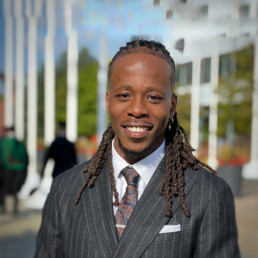
Written by Tyrone Sinclair
Tyrone is deputy headteacher of Addey & Stanhope School in London. He was a contributor to the BBC Teach resource, Supporting care-experienced children.
A significant majority of educators are drawn to the profession because they aspire to be catalysts for change. However, they are often taken aback by the limitations they encounter as they grapple with the multifaceted aspects of the profession. Change through support is a very delicate skill, one often not covered thoroughly whilst training, but it necessitates intentional leadership at an institutional level. Nonetheless, educators possess a unique liberty in that we are all leaders, regardless of our level of authority. We all possess the capacity to foster safety and facilitate opportunities for change within our respective spheres of influence, whether it be in our classrooms, through the curriculum, parental engagement, meetings, trips, and so forth – the possibilities are endless.
We are currently living in one of the most inclusive eras in human history. Whilst this allows for celebration, it also compels us to delve deeper and consider who is being included. Whose voices are being marginalised? Whose experiences are being disregarded? Who is seen and who is unseen? Ultimately, how is equity being applied in these circumstances?
The fight for inclusivity is a pursuit of social justice that extends far beyond the confines of the classroom. Its effects can be recognised and rewarded on a global scale. Although we may be making progress towards inclusive equity, it is important to acknowledge that not all spaces prioritise safety or consideration for all individuals. Education, therefore, is an embodiment of social justice as it endeavours to address the various inequalities that exist within society by creating opportunities and explicitly striving to provide equal opportunities for all.
This raises the question – what can I, as an educator, do? Amidst the external pressures, deadlines, targets, and ever-expanding job description, how can I make a meaningful change?
I believe the answer lies not in what can be done, but rather in how it can be done. I have been challenging educators to reconsider the spaces they create for safety. I urge them to contemplate the most vulnerable student who may ever enter their classrooms. Consider all the safeguarding concerns, whether they are rooted in familial or contextual factors. Reflect on the experiences these students have endured not only throughout their short lives, but even on that very morning. Contemplate the sacrifices and who they have to leave at the door just so they can walk into your space and conform.
Care-experienced young people are often among the most vulnerable individuals we encounter. The range of experiences they may have endured is vast, but more often than not, these experiences are far from ideal. Imagine the worst possible scenario. Consider the impact this must have on their worldview and how this trauma manifests itself in their thoughts, pathology, behaviours, and even their physical wellbeing. Now, take into account the intersectionalities that these young people may identify with. How much more challenging would it be for those from marginalised groups? How would you connect with such a young person? How would you welcome them into your space? What measures would you put in place to support, encourage, reassure, and protect them? How would you guide them if things went awry? Undoubtedly, your approach would be thoughtful, compassionate, and considerate. We know that for every vulnerable young person we are aware of and deem worthy of intervention, there are countless others who remain unknown and unsupported. Moreover, the strain on resources and support services makes it even more arduous for marginalised groups to access the help they need. Thus, your approach and support as an educator are pivotal to the safety and wellbeing of these young people, as your intervention may be the only kind they receive. Consequently, every interaction becomes an opportunity for intervention.
The experience of marginalised groups is to be unseen. This is often unintentional, but it is undeniably systemic and institutionalised. As educators, we are on the frontlines, and it is our duty to intentionally see what the world chooses to ignore. We must consciously consider worldviews and experiences that may differ fundamentally from our own. We must be intentional about change.
What can care-experienced young people teach us?
Acknowledging the unseen requires us to not only consider young people who have experienced care, but also challenges us to broaden our considerations even before they enter the system. Many care-experienced young people were once students in someone’s classroom, often unseen and unnoticed. However, we have the privilege of seeing the unseen and deliberately choosing to create safety for them within the spaces we control and have influence over.
For more information about the BBC Teach resource, Supporting care-experienced children, please visit https://tinyurl.com/ywykzd5h

